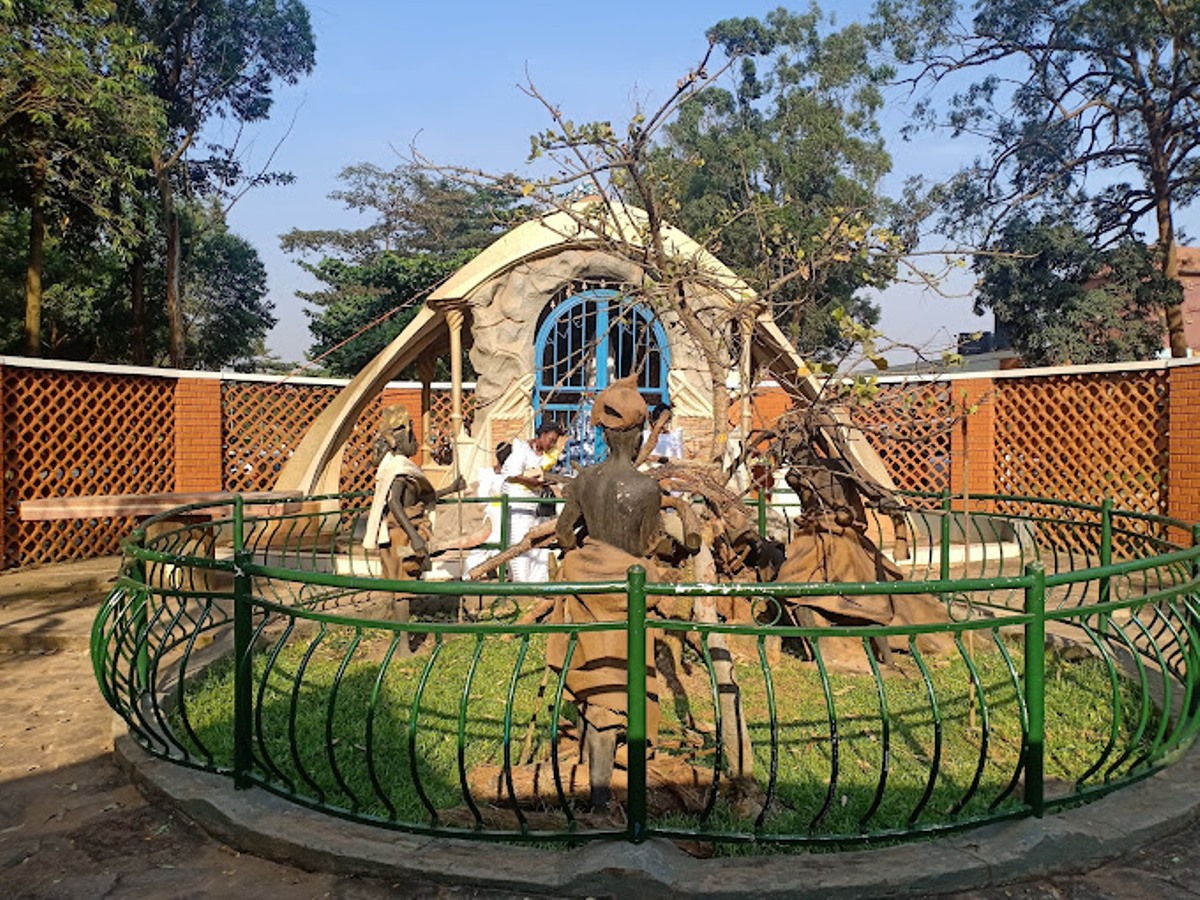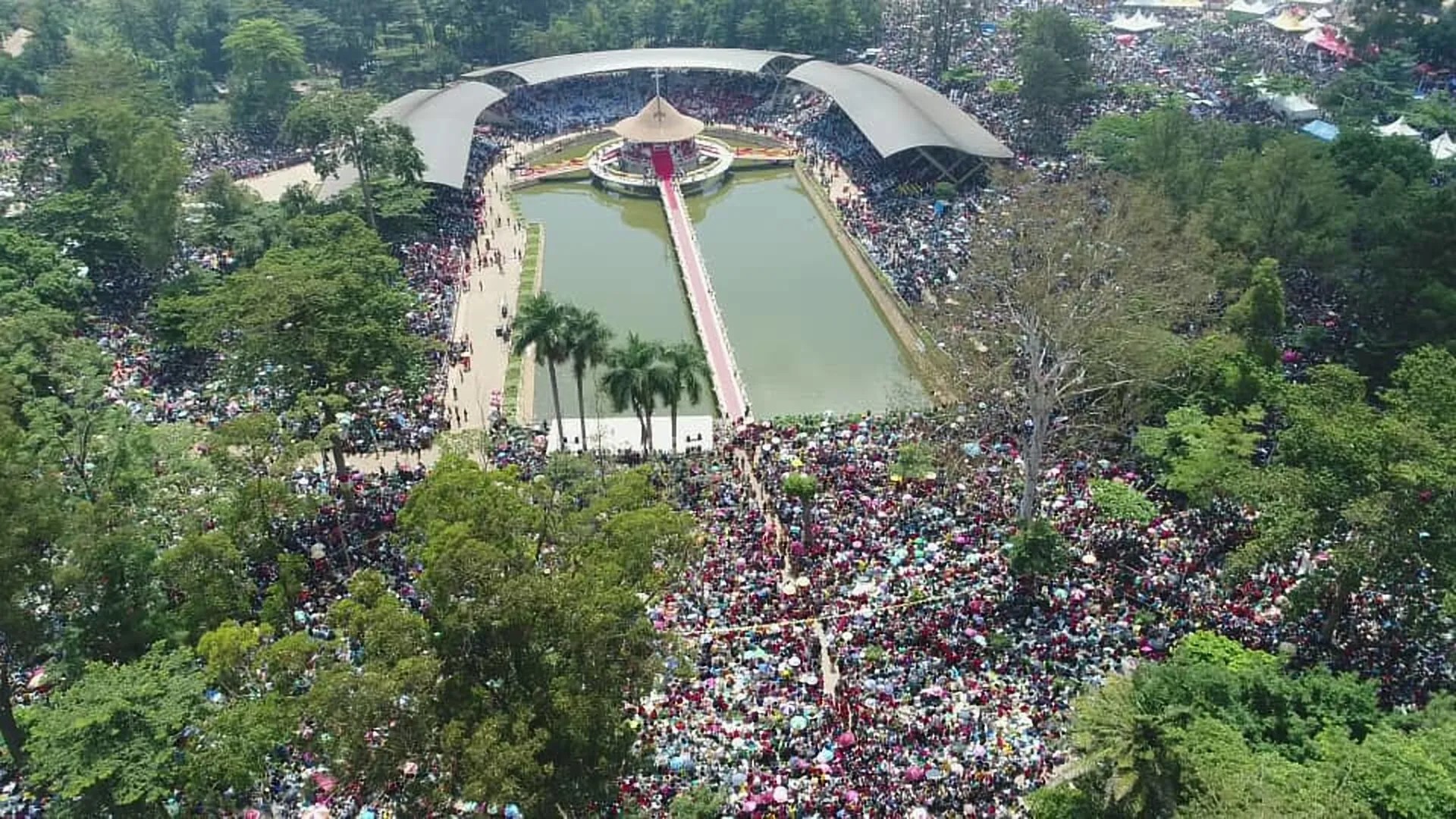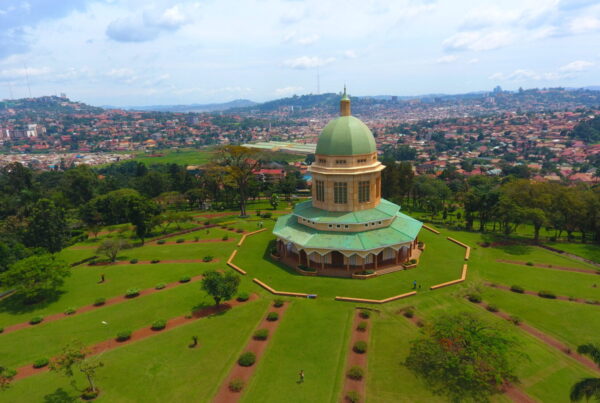Namugongo Martyrs’ Shrine: Uganda’s Sacred Pilgrimage of Faith, Sacrifice & Unity
A Soulful Journey to Uganda’s Sacred Hearth
Just northeast of Kampala, where Uganda’s capital slowly gives way to lush suburbs and sacred stillness, rises the Namugongo Martyrs’ Shrine—a place where time feels suspended and the spirit awakens. It’s not merely a religious site; it’s a monument of courage, a national altar of sacrifice, and a sanctuary that has transformed pain into purpose. Every year, millions travel from all corners of Africa and beyond to touch the soil where young converts stood firm in their faith, choosing death over denial. In the whispers of the wind and the prayers rising into the sky, you’ll feel the heartbeat of Uganda’s spiritual soul.
History: The Blood of the Martyrs That Nourished a Nation

Between 1885 and 1887, a fire of faith burned through the Buganda Kingdom. As Christianity spread through the royal court—especially among the pages serving King Mwanga II—it collided with traditional power structures. Fearing loss of authority and foreign influence, the king ordered the brutal execution of young men who refused to renounce their Christian faith. The executions, most horrifically carried out at Namugongo, were meant to extinguish the Christian flame. Instead, they ignited a movement that would shape the soul of a nation.
Twenty-two Catholic and ten Anglican converts were martyred—beaten, beheaded, or burned alive. The most remembered is St. Charles Lwanga, a protector of fellow believers, who was burned to death while praying. Their heroic stand laid the foundation for Uganda’s deep Christian identity. Canonized in 1964, these martyrs continue to inspire generations with their story of faith, loyalty, and profound sacrifice.
Shrine Design: Where Tradition Meets Sacred Architecture
What sets Namugongo apart from any shrine in Africa is its rich symbolism woven into local design. The Catholic basilica mimics the form of a traditional Baganda hut—round in shape, thatched-like roof, and open, circular worship space. This was a conscious decision to blend indigenous culture with spiritual reverence. It stands supported by 22 copper pillars—one for each Catholic martyr—surrounding the altar, which rests exactly where St. Charles Lwanga was burned.
Inside, the light is dim yet divine, broken by stained glass windows that depict scenes from the martyrs’ lives. Outside, expansive gardens, chapels, and prayer stations offer peaceful spaces for reflection. Across from the basilica is the Anglican martyrs’ shrine, a solemn yet equally powerful place of remembrance. Together, they honor a united sacrifice that transcended denomination, politics, and history.
Martyrs’ Day Experience: When Uganda Becomes a Nation of Pilgrims
Every June 3rd, the quiet reverence of Namugongo transforms into a sea of humanity. Pilgrims arrive in waves—by bus, by foot, by spirit—many walking for weeks with nothing but faith guiding their feet. Some come barefoot, some with wooden crosses slung over their shoulders, each person carrying personal intentions, prayers, and a desire to honor the martyrs’ memory.
By morning, the air is heavy with incense, hymns, and heartfelt cries. Millions gather around the basilica for a Mass that unites people across denominations, languages, and borders. The re-enactments of martyrdom are intense and deeply moving—many pilgrims break down in tears as they imagine the courage it took to die for faith. Politicians, bishops, families, and foreigners stand side by side, bound not by background but by belief.
It’s an experience that surpasses religion; it’s a moment when a nation remembers what it means to be true, brave, and loyal.
Visiting Guide: Location, Getting There, and What to Expect
Namugongo is located in Wakiso District, approximately 12 to 17 kilometers northeast of Kampala City. The shrine sits within the greater Kira Municipality and is accessible by both public and private transport. From Kampala city center, a drive takes roughly 30 to 45 minutes depending on traffic. Most visitors follow the Nakiyanja Road or Kyaliwajjala route, which leads directly to the shrine complex.
Public taxis (matatus) frequently ply the Kampala–Kyaliwajjala–Namugongo route, and boda-bodas (motorcycle taxis) are also available for the final leg. For international visitors flying into Entebbe International Airport, a direct transfer to Namugongo takes about 1.5 to 2 hours by car, making it feasible to visit either en route to or from Kampala.
When you arrive, you’ll find an expansive compound with well-maintained walkways, gardens, and signposts guiding you to each sacred point. At the center is the main basilica, with smaller chapels and altars scattered around. There is a serene man-made lake surrounded by prayer shelters and a walkway path where pilgrims meditate or pray silently. On quieter days, the silence is powerful—visitors often spend time journaling, lighting candles, or sitting under trees lost in thought.
Key highlights include the Martyrs’ Museum, which displays artifacts like execution tools, handwritten testimonies, photos, and garments. There’s also the Holy Spring, where pilgrims collect water believed to have healing and spiritual significance. Don’t miss the Torture Tree, a haunting reminder of where many martyrs were first tortured before being led to the flames.
You can also join scheduled Masses, led daily and especially on Sundays, in either English or Luganda. Local guides and church attendants are always available to answer questions and offer personal accounts that make the history even more tangible. Before you leave, visit the souvenir stalls selling rosaries, martyr figurines, books, and crafts. You’ll also find small eateries nearby offering traditional Ugandan meals, tea, and snacks.
Cultural Impact: A Shrine that Shapes a Nation’s Soul
Namugongo is more than a pilgrimage site; it’s a living museum of Uganda’s religious and cultural journey. The shrine has cemented its place in both the spiritual and civic narrative of the country. The story of the martyrs is taught in schools, invoked in politics, and reflected in Uganda’s firm embrace of religious freedom.
Economically, Namugongo has brought development to the surrounding areas. Hotels, guesthouses, restaurants, and markets thrive around the shrine, especially during peak pilgrimage seasons. Faith-based tourism has turned Namugongo into a spiritual heartbeat of Uganda’s tourism sector, alongside natural wonders like Murchison Falls or Bwindi’s gorillas.
Culturally, the martyrs’ story has inspired plays, songs, films, and literature. It has reminded Ugandans of the power of belief, and the value of dying for what one truly holds dear. Most significantly, it has fostered an ecumenical spirit that bridges divides, making Namugongo not just a Catholic or Anglican monument—but a Ugandan treasure.















